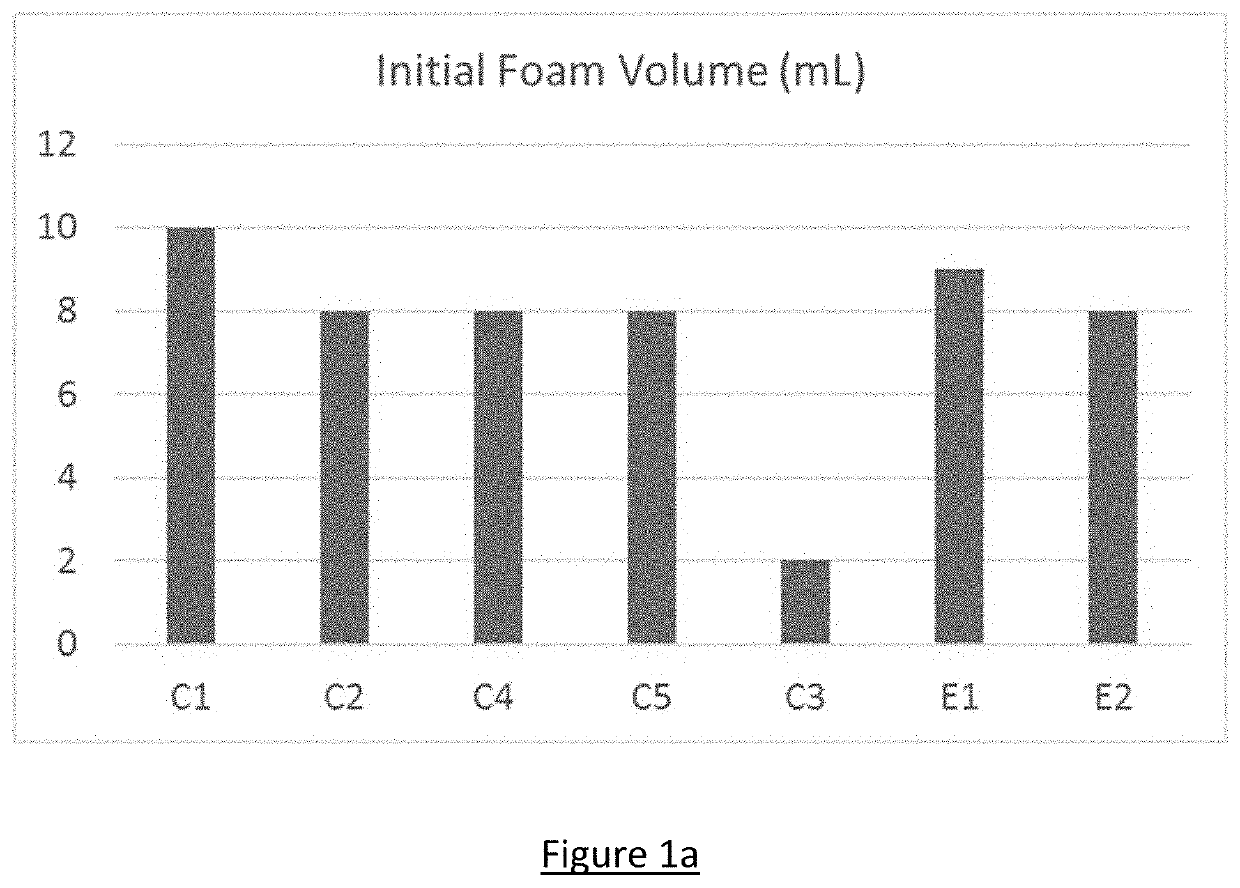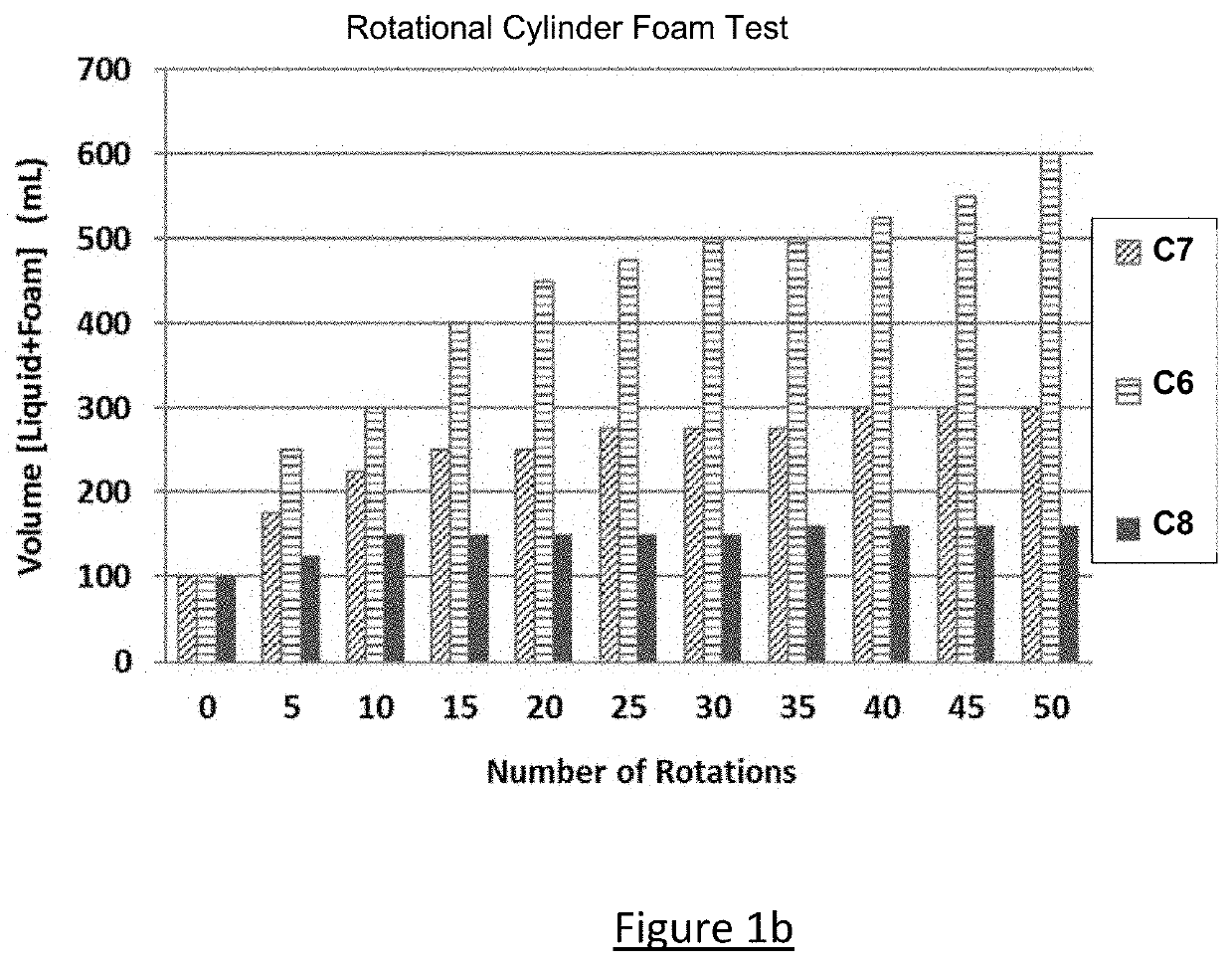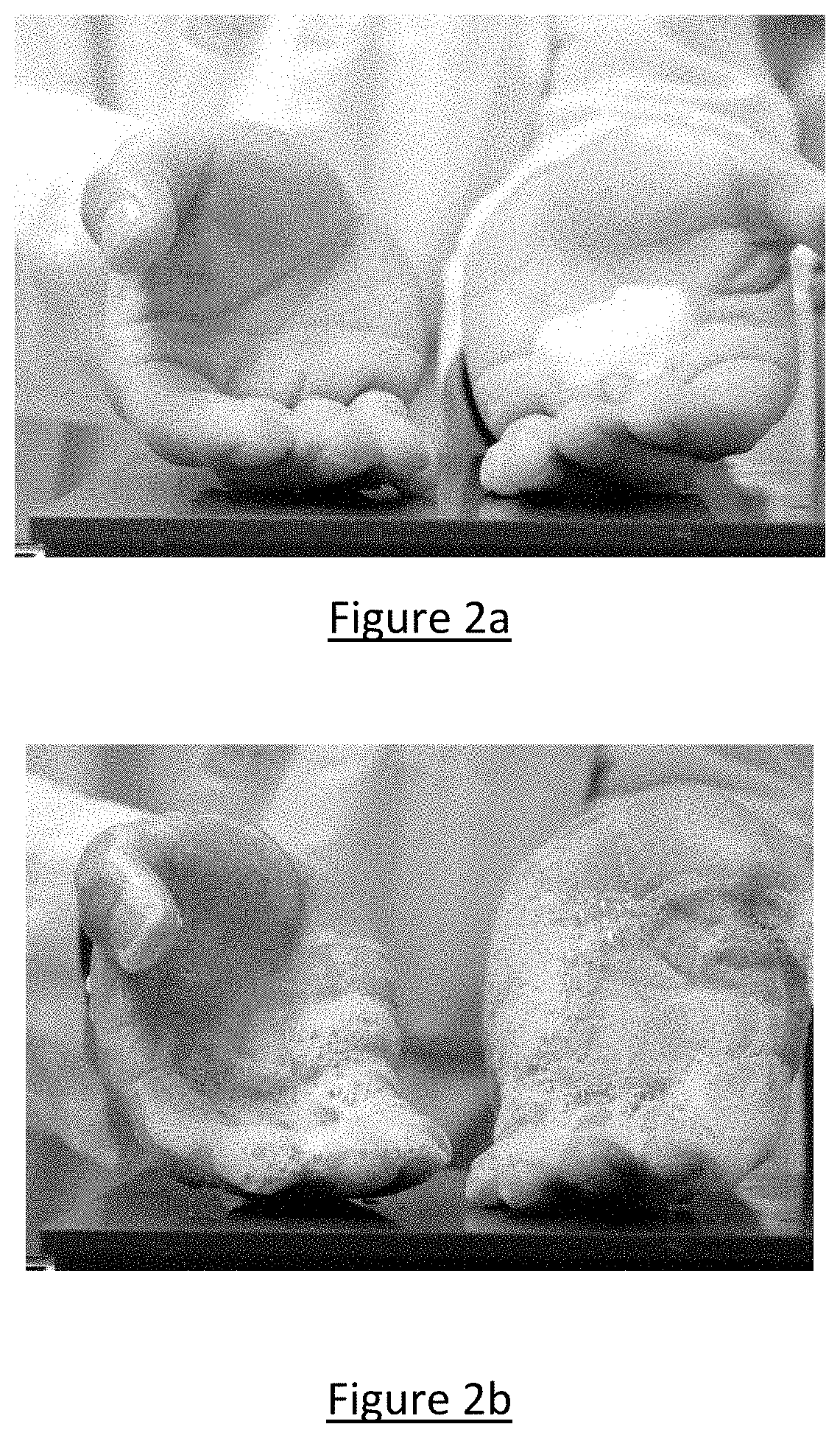Method of using in situ complexation of surfactants for foam control and conditioning
- Summary
- Abstract
- Description
- Claims
- Application Information
AI Technical Summary
Benefits of technology
Problems solved by technology
Method used
Image
Examples
example 1a
Initial Foam Volume Upon Dispensing from a Foam Pump: Inventive (E1-E2) and Comparative Examples (C1-C5)
[0240]Example 1a shows that compositions of the invention used according to the method of use of the invention have good initial foam behavior in line with typical high foaming cleanser compositions. The Example demonstrates that the present invention allows the use of surfactants in a combination which have previously not shown desirable foaming behavior and do not show desirable foaming behavior in Comparative Examples.
[0241]Compositions of Comparative Examples C1-C5 and Inventive Examples E1-E2 are listed in Table 1a. Foam from compositions is generated simultaneously via a dual chamber foam pump. The 2 chambers contain either the same composition or 2 different compositions as indicated in Table 1a for each of the examples. The initial level of foam upon dispensing the two foamed compositions is measured according to the described Initial Foam Volume upon Dispensing from a Foa...
example 1b
Rotational Cylinder Foam Test of Comparative Examples (C6-C8)
[0245]Example 1b generalizes the foaming behavior of compositions used in C1, C2, and C3, respectively, by using a different methodology of foam generation, confirming that anionic and cationic surfactants that are already combined in a composition do not foam well.
[0246]Compositions of Comparative Examples C6-C8 are listed in Table 1b. Foam is generated and volume measured according to the described Rotational Cylinder Foam Test.
[0247]Measured volumes are shown FIG. 1b. Example C6 uses only anionic surfactant and shows increasing foam volume with number of rotations and the foam volume is seen to be high (above 250 mL). Example C7 uses only cationic surfactant and shows increasing foam volume with number of rotations and the foam volume is seen to be high (above 250 mL). Example C8 on the other hand uses a combination of anionic surfactant and cationic surfactant. The volume for this composition is lower (below 250 mL) an...
example 2
Hand-Use Foam Application Test: Inventive (E3) and Comparative Examples (C9, C10, and C11)
[0250]Method of use of the invention is shown with this example. Initial foam of compositions of the invention used according to the method of use of the invention can be comparable to typical cleanser compositions, whereas compositions which directly combine anionic and cationic surfactant do not show acceptable foaming behavior. Further, it shows that during use, the foam level of compositions of the invention used according to the method of use of the invention disappears relatively quickly, whereas the foam created by a typical cleanser compositions remains and subsequently has to be rinsed for a longer time.
[0251]Compositions of Comparative Examples C9-C11 and Inventive Example E3 are listed in Table 2. Foam from compositions is generated simultaneously via a dual chamber foam pump (the two chambers contain either the same composition or two different compositions, as indicated in Table 2 ...
PUM
| Property | Measurement | Unit |
|---|---|---|
| Fraction | aaaaa | aaaaa |
| Fraction | aaaaa | aaaaa |
| Fraction | aaaaa | aaaaa |
Abstract
Description
Claims
Application Information
 Login to View More
Login to View More - R&D
- Intellectual Property
- Life Sciences
- Materials
- Tech Scout
- Unparalleled Data Quality
- Higher Quality Content
- 60% Fewer Hallucinations
Browse by: Latest US Patents, China's latest patents, Technical Efficacy Thesaurus, Application Domain, Technology Topic, Popular Technical Reports.
© 2025 PatSnap. All rights reserved.Legal|Privacy policy|Modern Slavery Act Transparency Statement|Sitemap|About US| Contact US: help@patsnap.com



